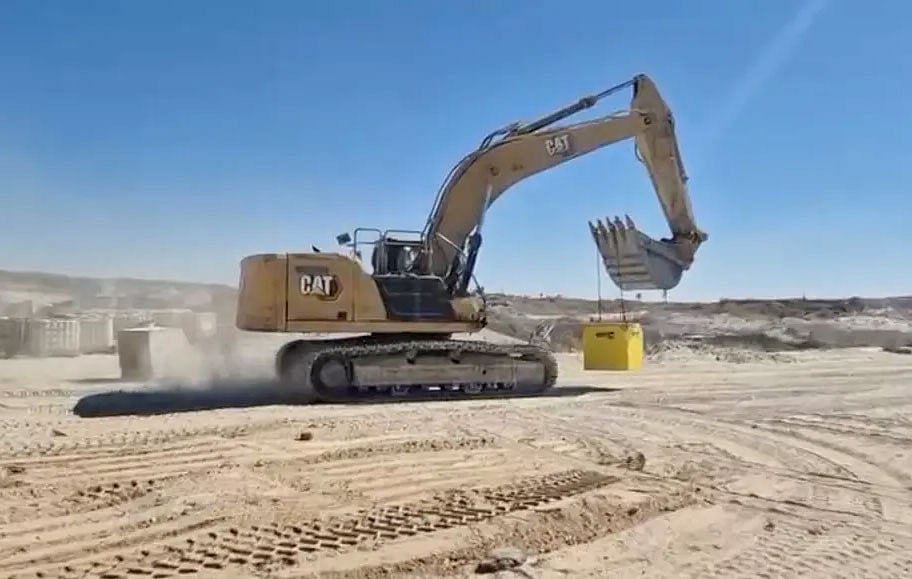Yellow Line in Gaza: From truce zone to kill zone — How a ceasefire boundary turned deadly
Meant to mark Israel’s withdrawal, the Yellow Line now divides Gaza — and costs lives

Dubai: Once envisioned as a line of calm, the so-called Yellow Line in Gaza has instead become a deadly boundary — one that separates Israeli forces from Palestinian civilians, and life from lethal danger.
Established under a US-brokered ceasefire deal, the line was meant to mark Israel’s partial withdrawal after two years of war. But as both sides accuse each other of violations, the Yellow Line has turned into a flashpoint where civilians are being shot for merely approaching what was declared a “safe zone.”
What exactly is the Yellow Line?
The Yellow Line is a notional demarcation boundary drawn under the US-sponsored Gaza ceasefire agreement. It defines the areas from which Israeli troops were to withdraw during the first phase of the truce, without fully exiting the Gaza Strip.
While not an internationally recognised border, it effectively splits Gaza into two:
1. Areas under partial Israeli control, and
2. Zones supposedly returned to civilian administration, though still heavily monitored
When and how was it created?
The concept originated in the ceasefire framework brokered by the US, Türkey, Qatar and Egypt, which came into effect on October 10.
Under the plan — part of President Donald Trump’s 20-point Gaza peace initiative — Israel agreed to withdraw troops to the Yellow Line while retaining operational control of roughly 50 per cent of the enclave.
The line stretches from south of northern Gaza to the outskirts of Rafah in the south.
How is Israel marking the line on the ground?
According to the Israel Defence Forces (IDF), troops have begun erecting 3.5-metre-tall yellow signposts and concrete blocks to mark the boundary.
The IDF says the markings are intended to prevent accidental crossings and to clarify the limits of its troop positions.
However, reports from Gaza and aid agencies indicate that the markings are incomplete or unclear, leaving civilians unsure of where the danger zone begins.
Why has it become so deadly?
In practice, the Yellow Line has turned into a kill zone.
Gaza’s Civil Defense says Israeli forces open fire without warning at anyone crossing or even approaching the line.
Tons of debris from bombed-out neighbourhoods make it almost impossible for displaced Palestinians to identify the boundary or avoid it.
Israeli officials insist troops act only when security is threatened, but humanitarian groups warn that the ambiguity is costing civilian lives daily.
Which areas remain under Israeli control?
Even after the declared withdrawal, Israeli forces remain deployed in key zones:
Shejaiya, Al Tuffah, and Zeitoun neighbourhoods of Gaza City
Beit Hanoun and Beit Lahia in the north
Rafah in the south
Large stretches along the Gaza coast
This means half of Gaza remains under direct or indirect Israeli control, despite the supposed truce.
Who is accused of violating the ceasefire?
Both sides blame each other:
Hamas allegedly violated the deal in three incidents on Sunday, including firing towards Israeli troops positioned behind the Yellow Line.
The Gaza Government Media Office reports that Israel has carried out over 80 violations since October 10, killing 97 Palestinians and injuring 230.
Twenty-one of those incidents occurred in a single day, when Israel bombed areas west of the line, which were meant to be safe zones.
What is the humanitarian impact?
Nearly 90 per cent of Gaza’s infrastructure has been destroyed since the conflict began in October 2023.
Drone surveillance, tank positions, and electronic targeting systems remain active along the line, making it nearly impossible for civilians to return home safely.
The Gaza Health Ministry estimates that more than 68,000 people have been killed and 170,000 injured since the war began — figures that continue to rise despite the ceasefire.
Why does the Yellow Line matter?
Analysts warn the Yellow Line could harden into a de facto border, cementing Israel’s partial occupation and redefining Gaza’s internal geography.
For Palestinians, it represents not peace but a moving front line — an invisible boundary that divides them from their homes and exposes them to daily risk.
For mediators, it is the most fragile test of whether the US-brokered truce can hold — or whether Gaza will slip back into open conflict.
Sign up for the Daily Briefing
Get the latest news and updates straight to your inbox
Network Links
GN StoreDownload our app
© Al Nisr Publishing LLC 2025. All rights reserved.
